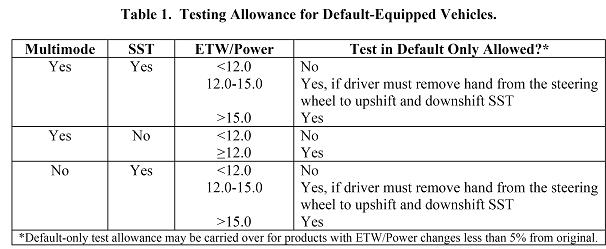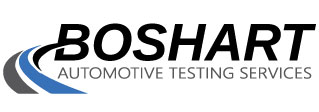EPA: Shift Survey Requirements – Really? Why?
In December 2009 the EPA released what is commonly known as a “Dear Manufacturer” Letter, which revised previous certification and fuel economy policy regarding vehicles equipped withMultimode Transmissions, Select-Shift Transmissions (SST), and Shift Indicator Lights. This is another example of this cat and mouse relationship between regulators and manufacturers.
Vehicle manufacturers have developed transmissions with shifting options designed to enhance driving feel and performance. However, this transmission technology creates driving behavior and vehicle operating conditions not easily fitted to the standardized emission test procedures of the EPA. This Letter is the EPA’s response, designed to ensure that the intent of both emissions and fuel economy regulations are upheld. This new policy will be applicable beginning Model Year 2011, but optional Model Year 2009-2010.
With this policy, the EPA has provided various ways a manufacturer can determine which transmission mode is predominant. This is necessary to establish what and how many emissions tests should be conducted to determine both the vehicles’ emissions compliance and fuel economy. The scenarios in which the predominate mode can be assessed is described in the table below:

The EPA suggests a number of ways the manufacturer can design and conduct a survey to determine the different possible outcomes to define the predominant mode. One of the suggested methods is telephone or mail-out questionnaires. The EPA recommends that an independent organization perform these studies. The minimum amount of respondents is set at 50 participants or 30% of vehicle sales, whichever is the smaller number.
Web-based surveys are also acceptable by the EPA, as long as good engineering judgment is being used in the design and implementation of the program.
Additional methods include logging the “driver-selected mode” through instrumentation on a participant’s vehicle. The manufacturer would be required toprovide data from 15 representative drivers. Manufacturers can also collect data from the vehicle’s Powertrain Control Module (PCM), as long as there is enough data collected from each participant to represent at least one week of in-use driving.
At Boshart, we offer all of these services. We have nearly a decade of experience in data collection and equipment installation, as well a web site that allows current Rate Based Monitoring participants to schedule appointments and choose their desired incentive at their convenience. Click here to read more . We pride ourselves in our relationships with our customers and participants while getting the job done thoroughly and efficiently.
